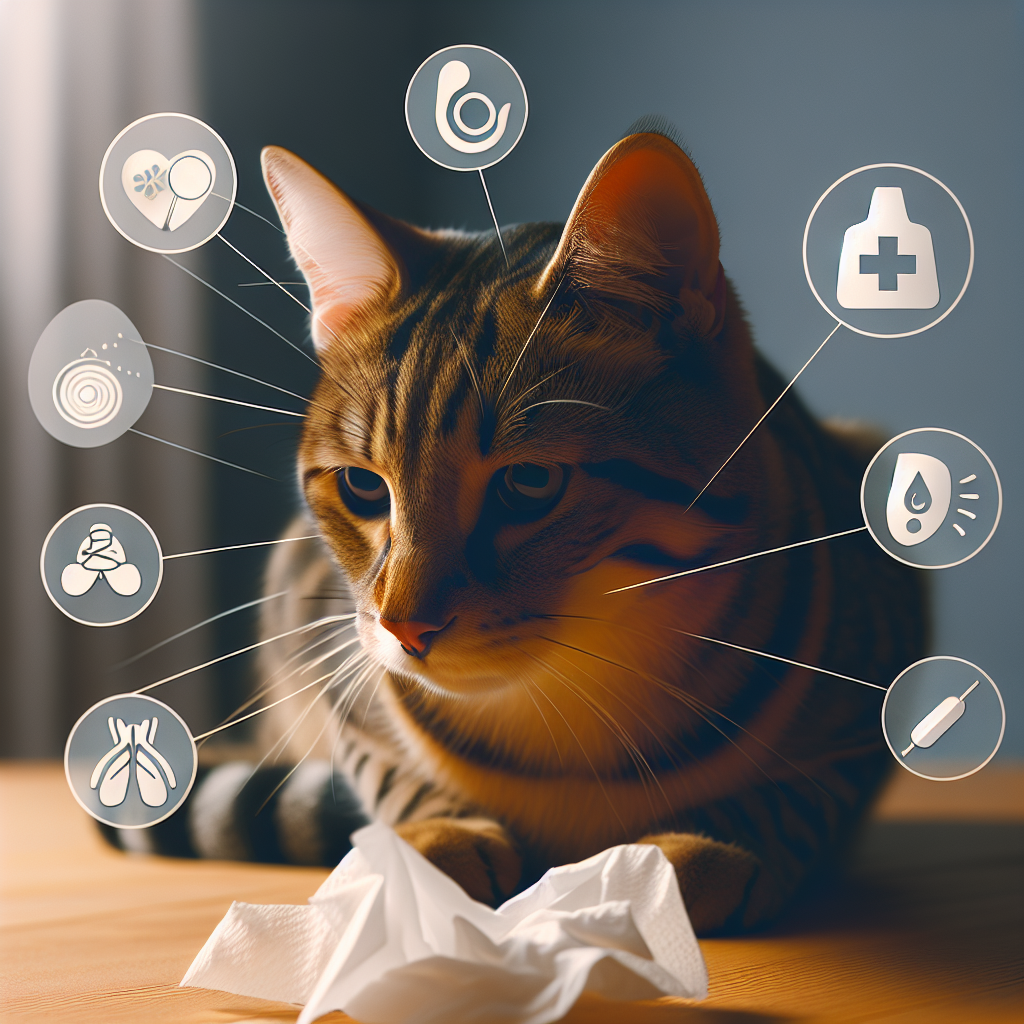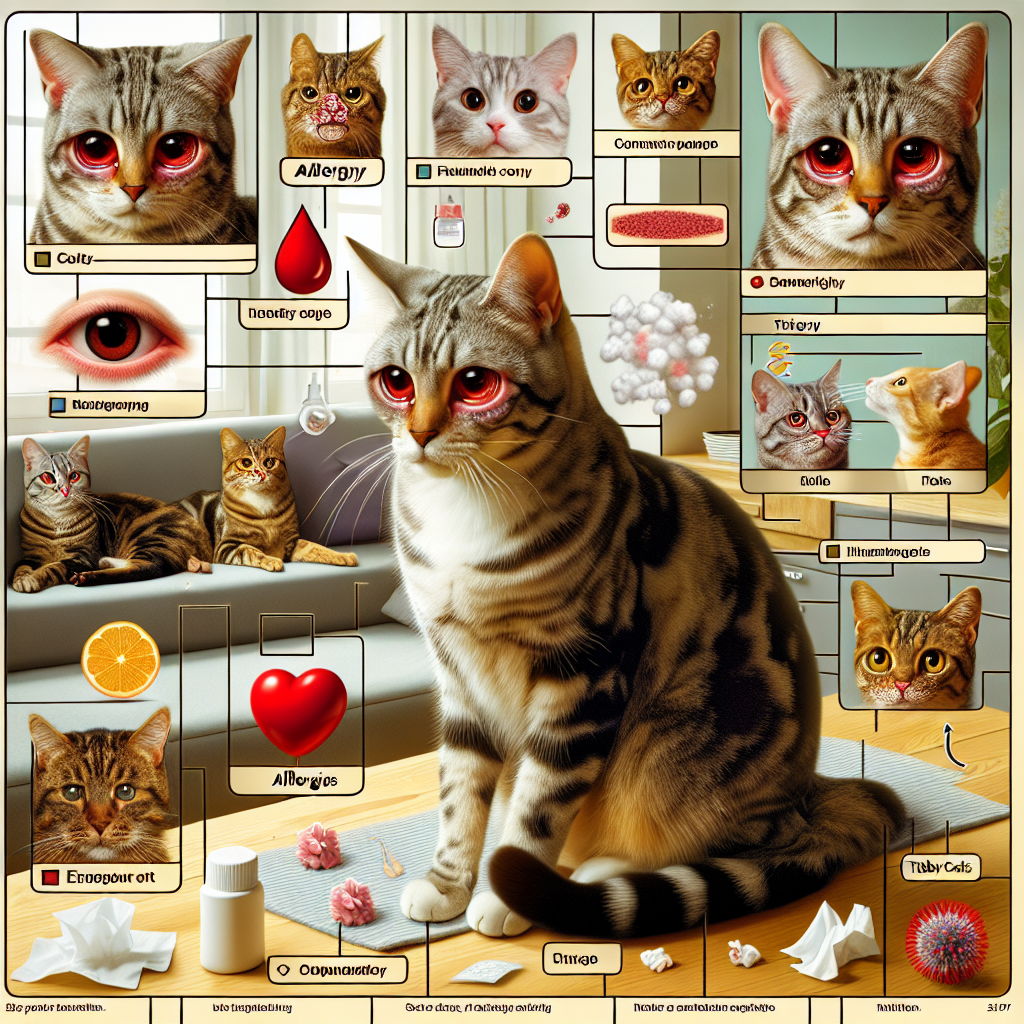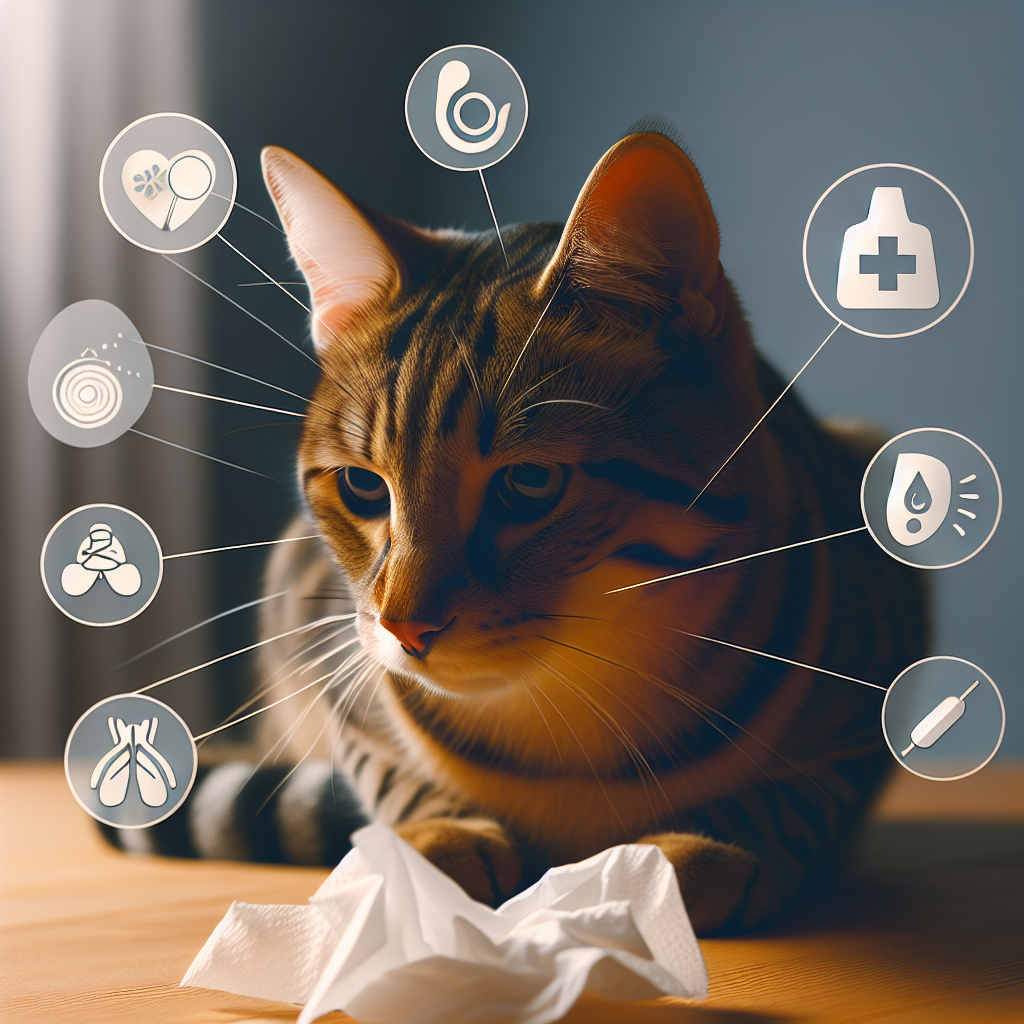Are you a cat lover who also happens to suffer from allergies? Well, you’re in luck! In this article, we’ll be discussing the fascinating world of tabby cats and their relation to allergies. Contrary to popular belief, not all cat breeds are created equal when it comes to causing allergic reactions. Tabby cats, known for their distinctive coat patterns, are often considered to be hypoallergenic. This means that they produce fewer allergens, making them a great choice for individuals with allergies. So, if you’ve been longing for a feline companion but have been held back by allergies, keep reading to discover the wonderful world of tabby cats and how they can be the purr-fect addition to your home.

What is a Tabby Cat?
A tabby cat is a domestic cat that is characterized by its distinctive coat pattern. Unlike other cats that come in a variety of solid colors or patterns, tabby cats have a unique combination of stripes, spots, and swirls on their fur. This pattern is a result of specific genes that are responsible for the tabby coat pattern. Tabby cats are not a specific breed but can be found in a variety of breeds and domestic mixes.
Differentiating a Tabby Cat
Identifying a tabby cat is relatively easy due to its characteristic coat pattern. The most common trait of a tabby cat is the presence of vertical stripes on its body. These stripes can be thick or thin, depending on the type of tabby. Another distinctive feature is the “M” shape on the cat’s forehead, formed by the dark stripes. Tabby cats also have a pattern of dark lines on their cheeks, resembling the letter “L.”
Tabby Cat Genes
The tabby coat pattern is a result of a specific gene called the “agouti gene,” which controls the distribution of pigments in a cat’s fur. There are several variations of the agouti gene that can produce different tabby patterns. These patterns are inherited from the cat’s parents, and different combinations of genes can give rise to various tabby coat patterns, such as classic tabby, mackerel tabby, ticked tabby, spotted tabby, and patched tabby.
Types of Tabby Cats
Classic Tabby
Classic tabby cats are characterized by their bold and swirling marble patterns on their sides. These patterns often resemble bullseyes or spirals. Classic tabbies also have stripes on their legs, tails, and faces. The body patterning is usually accompanied by a lighter colored neck and stomach area.
Mackerel Tabby
Mackerel tabbies have narrow, straight stripes that run vertically along their bodies, resembling fishbones. The stripes are evenly spaced and parallel, creating a distinct appearance. These cats may also have stripes on their legs and tails. Mackerel tabbies typically have a dark stripe running down their spine, which then branches off into smaller stripes across their sides.
Ticked Tabby
Ticked tabbies, also known as Abyssinian tabbies, have a unique coat pattern where each hair has multiple bands of color. This gives their fur a salt-and-pepper appearance. Unlike other tabby patterns, ticked tabbies do not have defined stripes or distinct markings. Instead, their fur looks uniform in color from a distance, but upon closer inspection, you can see the bands of color on each individual hair.
Spotted Tabby
Spotted tabbies have distinct spots on their coat rather than stripes. These spots can vary in shape and size, ranging from small round spots to larger oval-shaped spots. The spots are scattered randomly across the cat’s body, giving them a unique and eye-catching appearance. Spotted tabbies may have spots on their face, legs, and tail as well.
Patched Tabby
Patched tabbies, also known as tortoiseshell tabbies, have a mix of tabby patterns with patches of solid colors. These patches can be a combination of any tabby pattern, such as classic, mackerel, or spotted. The colors can vary but are typically a mix of black, orange, and cream. Patched tabbies are almost exclusively female, as the genes responsible for this pattern are linked to the X chromosome.

Understanding Allergies
Allergies are an immune system response to a particular substance, known as an allergen. When an allergic individual comes into contact with an allergen, such as pollen or pet dander, their immune system reacts by producing antibodies. This immune response can lead to a range of symptoms, from mild to severe. It’s essential to understand the causes and symptoms of allergies to effectively manage them.
Causes of Allergies
Allergies can have various causes, depending on the specific allergen. In the case of cat allergies, the main culprit is a protein called Fel d 1. This protein is produced in a cat’s skin, saliva, and urine and is easily spread throughout their environment. When this protein comes into contact with an allergic individual, it triggers an allergic reaction. Other common allergens include dust mites, pollen, mold spores, and certain foods.
Symptoms of Allergies
The symptoms of allergies can vary from person to person but often include itching, sneezing, runny nose, watery eyes, coughing, wheezing, and skin rashes. In severe cases, allergies can lead to difficulty breathing and even anaphylaxis, a life-threatening reaction. It’s crucial to recognize the symptoms and seek appropriate medical attention if necessary.
Testing for Allergies
If you suspect that you have allergies, it’s wise to consult with an allergist or immunologist. These specialists can perform various tests to determine the specific allergens causing your symptoms. Some common methods of allergy testing include skin prick tests, blood tests, and oral or nasal provocation tests. Identifying the specific allergen can help guide treatment and management strategies.
Allergies to Cats
Fel d 1 Protein
Fel d 1 is a protein produced by cats that is known to be a significant allergen for many people. This protein is present in a cat’s skin cells, saliva, and urine. When a cat grooms itself or sheds its skin cells, the Fel d 1 protein can become airborne and settle onto surfaces in the home. Individuals who are allergic to this protein may experience symptoms when exposed to even small amounts of it.
Allergy Triggers
In addition to Fel d 1, other allergens associated with cats can trigger allergic reactions. These allergens include cat dander (flakes of dead skin), cat saliva, and cat urine. These substances can be present in a cat’s environment and can become airborne or attach to surfaces, leading to allergic symptoms. Understanding these triggers can help individuals manage their allergies more effectively.
How Tabby Cats Affect Allergies
Tabby Cats and Fel d 1 Protein
As tabby cats are no different from other cats when it comes to producing Fel d 1 protein, they can potentially trigger allergies in allergic individuals. However, it’s important to note that the tabby coat pattern itself does not contribute to allergy symptoms. Allergic reactions are primarily caused by the protein, not the cat’s fur pattern. Therefore, whether a cat is a tabby or not, the level of allergens present in their environment depends on factors such as grooming habits and living conditions.
Allergen Levels in Tabby Cats
While Fel d 1 protein production is not directly related to the tabby coat pattern, individual cats may produce varying levels of this allergen. Factors such as age, gender, hormones, and overall health can affect the amount of Fel d 1 protein a cat produces. It’s worth noting that no breed of cat is entirely hypoallergenic, but some individual cats may produce fewer allergens than others. Regular grooming and maintaining a clean living environment can help reduce allergen levels regardless of the cat’s coat pattern.
Reducing Allergy Symptoms
Keeping a Clean Environment
One of the most effective ways to reduce allergy symptoms when living with a tabby cat is to maintain a clean living environment. Regular vacuuming, dusting, and cleaning can help remove allergens from surfaces and the air. Using microfiber cloths or HEPA filters can be particularly helpful in trapping and removing cat dander and other allergens effectively. It’s also advisable to wash bedding, curtains, and other fabrics regularly.
Air Purifiers
Using air purifiers equipped with HEPA filters can significantly improve indoor air quality by capturing airborne allergens. These devices work by pulling air through the filter system, trapping microscopic particles such as cat dander, pollen, and dust mites. By reducing the allergen load in the air, symptoms can be minimized, providing relief for allergic individuals.
Reducing Cat Dander
Regular grooming practices, such as brushing your tabby cat’s coat, can help minimize the amount of cat dander in your home. Brushing removes loose fur and dander, preventing it from settling on surfaces and becoming airborne. Additionally, bathing your tabby cat, if they tolerate it, can help reduce the allergen load on their fur. Consult with your veterinarian for guidance on the best grooming routine for your tabby cat.
Tips for Living with Allergies and Tabby Cats
Medication Options
If allergy symptoms persist despite efforts to reduce allergen exposure, over-the-counter or prescription medications may be necessary. Antihistamines, nasal sprays, and allergy shots are commonly used to alleviate allergy symptoms. Consult with an allergist or immunologist to determine the most appropriate medication and dosage for your specific situation.
Creating Allergy-Free Zones
Designating certain areas or rooms in your home as “allergy-free zones” can provide relief for allergic individuals. These areas should be kept meticulously clean, free from any cat-related allergens. Installing high-efficiency air purifiers and minimizing cat access to these zones can help maintain a more allergen-free environment.
Minimizing Direct Contact
While it may be challenging to resist cuddling and petting your tabby cat, minimizing direct contact can help reduce allergen exposure. Washing your hands after touching your cat can help remove any allergens present. Additionally, avoiding allowing your cat to sleep in your bed or on upholstered furniture can help minimize allergen accumulation in areas where you spend significant time.
Caring for a Tabby Cat with Allergies
Grooming Practices
Regular grooming practices are essential for both the well-being of your tabby cat and managing allergies. Brushing your cat’s coat frequently can help remove loose fur and dander. This not only reduces allergen levels but also prevents matting and hairballs. Trimming your cat’s nails regularly can also minimize the transfer of allergens when they scratch.
Allergy-Friendly Home
Creating an allergy-friendly home environment is crucial when living with a tabby cat and allergies. Opt for flooring materials such as tile or hardwood, as opposed to carpeting, which can trap allergens. Washable covers for your furniture can also help reduce allergen build-up. Eliminate unnecessary clutter that can collect dust and dander. Investing in a high-quality vacuum cleaner with a HEPA filter is also beneficial.
Food Allergies
In some cases, cats can also develop food allergies, which may worsen allergy symptoms in humans. If you suspect that your tabby cat has a food allergy, consult with your veterinarian. They can recommend an appropriate diet or perform an elimination diet to identify the specific allergens causing the allergic reaction. Managing your cat’s food allergies can contribute to a healthier and more comfortable living environment for both you and your tabby.
When Allergies Can’t Be Managed
Rehoming a Tabby Cat
In rare situations when allergies cannot be effectively managed, it may be necessary to consider rehoming your tabby cat. This decision should not be taken lightly, and every effort should be made to exhaust all other options before considering rehoming. If rehoming becomes the only viable option, reach out to local animal rescue organizations or trusted individuals who may be able to provide a suitable home for your tabby cat.
Alternative Options
If rehoming is not a feasible solution, considering allergy immunotherapy, such as allergy shots, may be worth exploring. Allergy shots are a long-term treatment option that can potentially desensitize your immune system to specific allergens. This treatment involves receiving injections of tiny quantities of allergens over time, gradually building up tolerance. Discuss this option with an allergist to assess its suitability for your individual circumstances.
Conclusion
Living with allergies and a tabby cat is possible with proper management and understanding. Tabby cats may produce the Fel d 1 protein responsible for allergies but do not inherently cause allergies solely due to their coat pattern. By implementing strategies to reduce allergen exposure, maintaining a clean environment, and seeking appropriate medical care, you can enjoy the companionship of your tabby cat while managing your allergies effectively. Remember, allergies should not prevent you from experiencing the joy of having a loving tabby cat in your life.

